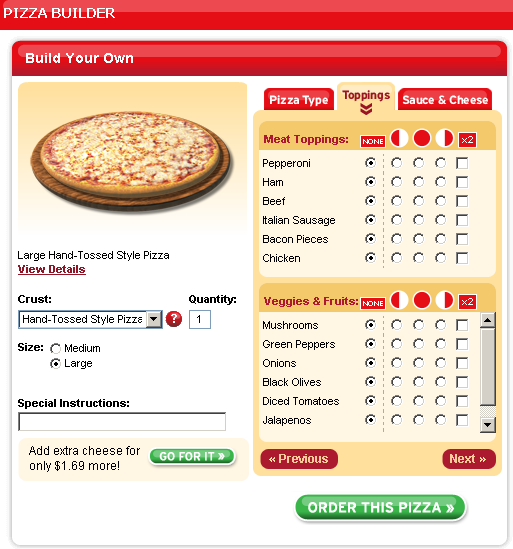If you happened to live in Santa Cruz in 1994 you could sit down at your computer, open up your favorite browser, and then go ahead and order a pizza online.
You could do all of this on PizzaNet, owned and operated by Pizza Hut. PizzaNet was an experiment that launched in the early 90’s, a way for Pizza Hut to test the waters and see if this World Wide Web thing had a real shot at a future. It was proposed by a particularly ambitious Pizza Hut owner in Santa Cruz, and developed by a few folks at a development shop known as Santa Cruz Operation (SCO).
This being something of a trial run, the site itself was kept pretty basic. Yet it bursted with possibility. Any web user could go online, visit pizza.net, fill out a form that included their pizza choice, address, and phone number and just like that, get a pizza delivered straight to their door. The web may not have been exactly designed for this purpose, but that didn’t stop it from being pretty incredible.
What’s kind of fascinating about PizzaNet is that was conceived and built in 1994. That makes it one of the first few thousand websites up on the web. Browsers were barely able to support inline images, and the total number of users on the web was a small fraction of the population. It was only just recently that the web had managed to to push past a world of academics and research papers to a place where web people were beginning to find themselves in online communities, publishing their digital identities for the very first time.
The idea behind it wasn’t all that new. In the web’s earliest days, some began positing that our future may become dominated by the technology, and we would soon live in a world where our digital life was simply an extension of our actual life. The web was global, and interconnected, and decentralized, and so one could at least imagine a time when everything everywhere would be available on demand and at the click of a button. Of course, these were mostly theoretical musings published in magazines and posted to blogs. There was yet to be a true actualization of the concept. Then here came this site selling pizza on the web. It was quite possibly the first thing ever sold online (though this is a fact that is a bit contested). It was an immediate realization of a vision that was around since the very first days of the World Wide Web.
The technology behind PizzaNet was surprisingly rudimentary. On the site was a webform, itself fairly complicated but well trodden even in the early days. The form contained a customized menu with a list of pizza toppings and drinks. When the form was submitted, the data was transmitted to a centralized Pizza Hut server in Witchita, then relayed back to the Pizza Hut location in Santa Cruz through an Internet connection that had been set up in the location specifically to receive messages about what orders came through the site. To ensure that the order was error and prankster free, an employee would then call to verify the order, and the customer could pay for the pizza upon delivery, just like you’d do over the phone.

There were a lot of new ideas, and thoughts about where PizzaNet could go and what it could be, but it was basically filed away for later. The rest is, as hopefully you know by now, history. A couple of years after the site launched, the web exploded, and just about everything could be bought and sold online. On that list, of course, was pizza delivery, and the world largely forgot about PizzaNet.
We’re way past ordering pizza’s these days. The technocratic vision of the future sown and spread by early web adopters has more or less been seen through at this point. But what’s interesting to me about PizzaNet is that it rather than re-inventing a concept for it’s digital manifestation, it largely just mirrored reality. Despite that fact that most of our shared lives are experienced online these days, we still find a need to differentiate from our online lives from what happens in real life. As if they are somehow two distinct realities. If we were to follow PizzaNet’s lead we may have found ourselves in a world where the two were a bit more merged. Where one traded off with one another. Where a human being called you up on the phone to make sure they got everything right. Instead, we order online, pay online, interact online, and then go back to our “real lives.”
Ok, I’m reaching. But a site like PizzaNet interests me because, in some small way, it represents an alternate outcome of the web. And it’s a path that we’ve more or less forgotten about.
Amazingly, PizzaNet is still up for your viewing (but not ordering) pleasure.
from Hacker News https://ift.tt/fljpwRn
No comments:
Post a Comment
Note: Only a member of this blog may post a comment.